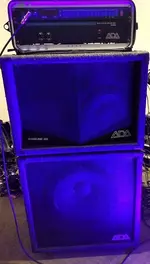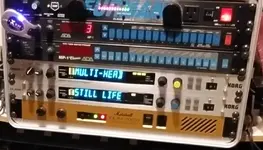Being sensible here, I really have to disagree. The modellers in my Line 6 - the only thing I can use as a comparison as I have them, are really, really good. I bought them on the recommendation of Sound on Sound Magazine - the only mag I trust to be accurate and honest, and having SM58s and Sennheiser '35 and '45 mics I know how they sound very well, and if I change one Line 6 to the 58 and one to the Sennheiser, it's easy to tell which one is which - I'm absolutely convinced their modelling is spot on. As I said, what it cannot model is the polar pattern - because that is a physical thing and depends on the mechanical construction of the capsule with the vents and paths inside. So the modelled mic sounds the same, but where you can predict is a safe place for a monitor wedge with say the 58, is NOT the same on the Line 6. This, I have lived with happily.
I have a guitar synth - a Roland, and I have a line 6 system with a line 6 guitar that again has great modelling. However, we are talking about EQ replicating the frequency response curve of a microphone, and I think it can do it. I rather think my line 6 guitar can indeed sound like the guitars it models, but the pickups of course aren't there - so any weirdness you create with audio feedback will be different.
Oh - and this stuff about transformers - they are passive devices so do not interpret anything. They don't even decode anything - other windings can be used by further circuitry to do interesting stuff, but transformers do nothing at all apart from couple one coil to another, or more than one. The exhibit inductance, resistance and capacitance. They have voltage limits and they can be saturated - but they are just wire on formers, and nothing more clever than that. We think distortion can be nice sometimes, and transformers change the signal as it passes. Audio folk often believe this change is magical. I'd rather circuits were transparent personally, so I can change things!







